Yellowstone in Fall
Every season in Yellowstone National Park offers something different. Having visited at some very different times of year, we’ve noticed pros and cons to each. We just spent a week in Yellowstone in November, and on my very first visit I went to Yellowstone in late October, so I thought it would be a great opportunity to talk about what we like (and what we don’t like) about visiting Yellowstone in the fall!
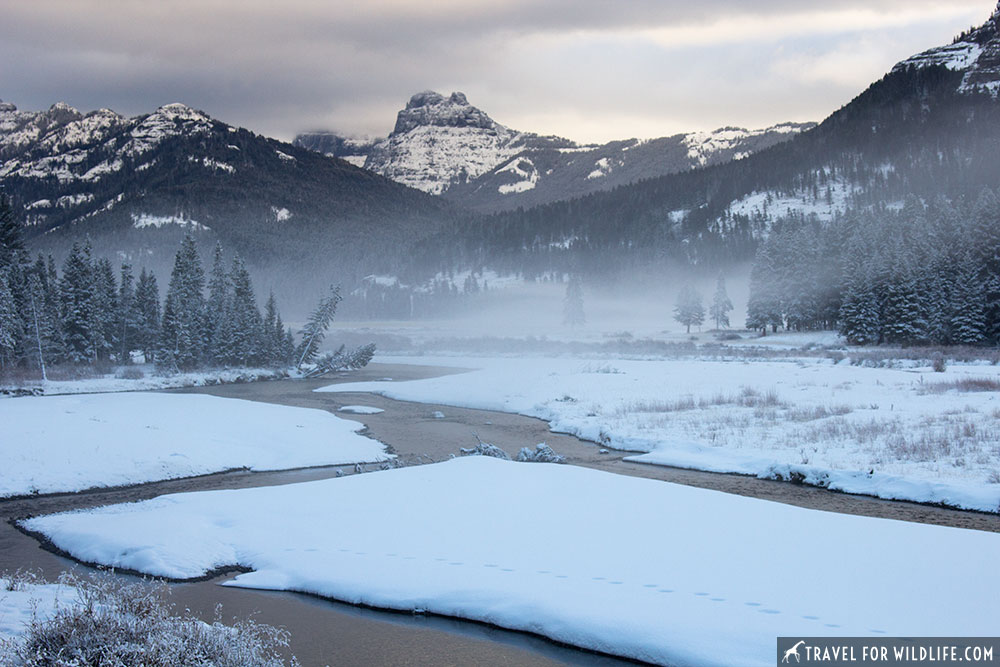
Fall in the northern hemisphere runs from September 22 to December 21 (the Autumnal Equinox to the Winter Solstice). But the biological fall season can feel very different in Yellowstone. Ground squirrels may start their winter hibernation as early as July! Snow may start falling in the higher elevations soon after. Bears are already hibernating in November. It’s almost as if the short summer rushes straight into a long winter without giving Autumn a chance. But there’s still a lot to love about Yellowstone in October and November.
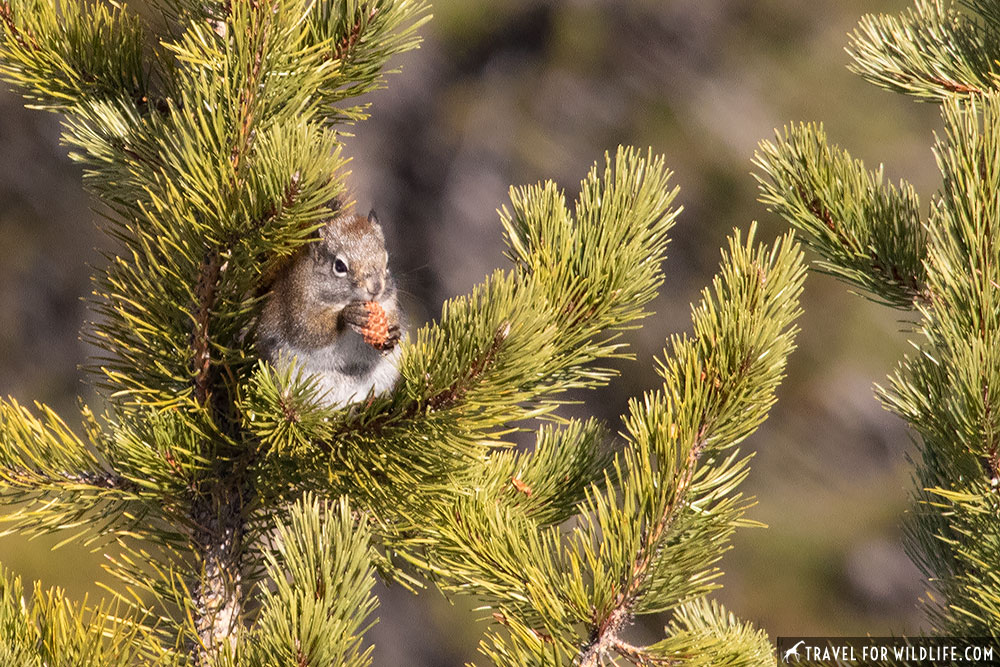
First off, I should admit our biases. We love watching Yellowstone wildlife in winter. Biggest pros: very few visitors, and wolves are easy to see against the snow. Biggest cons: Super cold (make sure you bring the right winter gear for Yellowstone), difficult to wander without snowshoes or skis, and our favorite place to stay (Cooke City & Silver Gate) is noisy with snowmobilers.
On the reverse side, summer is our least favorite time to visit because visitor numbers skyrocket and wildlife viewing can be more difficult. Fall has its own unique set of pros and cons. If you are planning a trip to Yellowstone consider this:
Pros for visiting Yellowstone in the Fall (as opposed to Winter)
- Solitude (November has the least visitors of any month)
- You can still hike (enough snow to be pretty but not enough to snowshoe)
- The wolves are active (the denning season has come to an end and the whole pack travels together)
- Cheap lodging (you may be the only person in Cooke City in November)
- Quiet in Cooke City (snowmobiles haven’t arrived yet)
- Warmer (you can actually stand outside without going numb)
Cons for visiting Yellowstone in the Fall
- Shops are closed (Cooke City & Silver Gate are almost shut down in November)
- Few large mammals in the Lamar (many migrate out to summer feeding grounds)
- Harder to see wolf packs against patchy snow
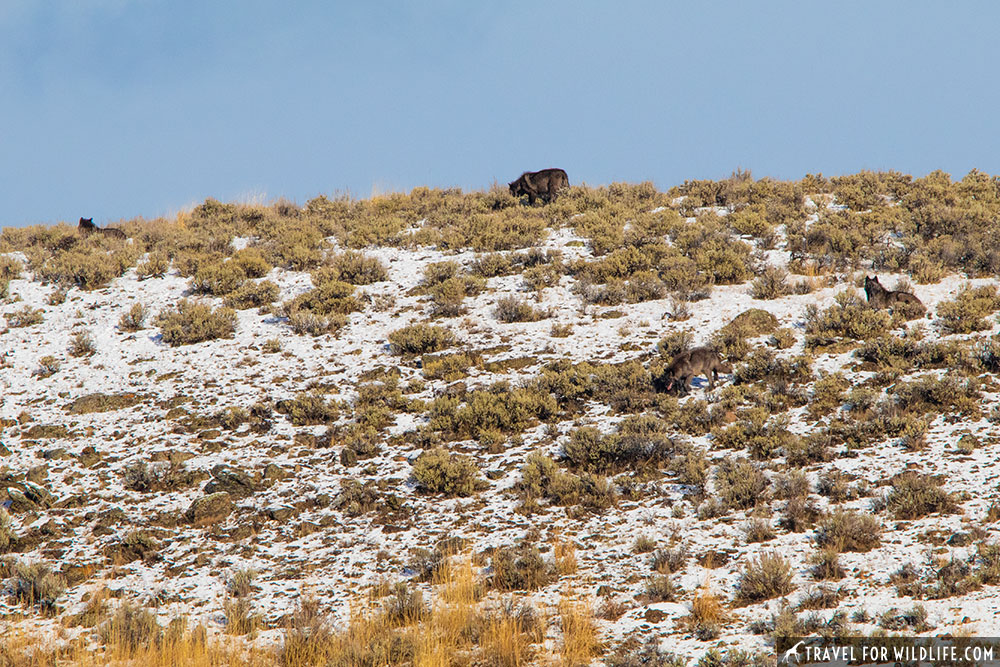
*This article may contain affiliate links. We receive a small commission at no extra cost to you.*
Planning a Trip to Yellowstone in the Fall, the Logistics
Firstly, here are some of the logistics you’ll be dealing with. Keep in mind that most of the roads in the park close at some point during the fall. Nearly every road is open through November 2, weather-permitting (unless a huge snow blocks them.) There is an excellent interactive map halfway down this page that you can hover over to see which dates each road is scheduled to close and open.
If you visit in November (or later through winter) the only way into the park is through the North entrance at Gardiner and the only roads you can travel are down to Mammoth, through Tower Junction, and then east through the Lamar Valley to Silver Gate and Cooke City (see our map below.) But this is plenty for watching wildlife in Yellowstone! These roads are plowed regularly between 6 in the morning and 4 in the afternoon so they are drivable even in serious snow storms.
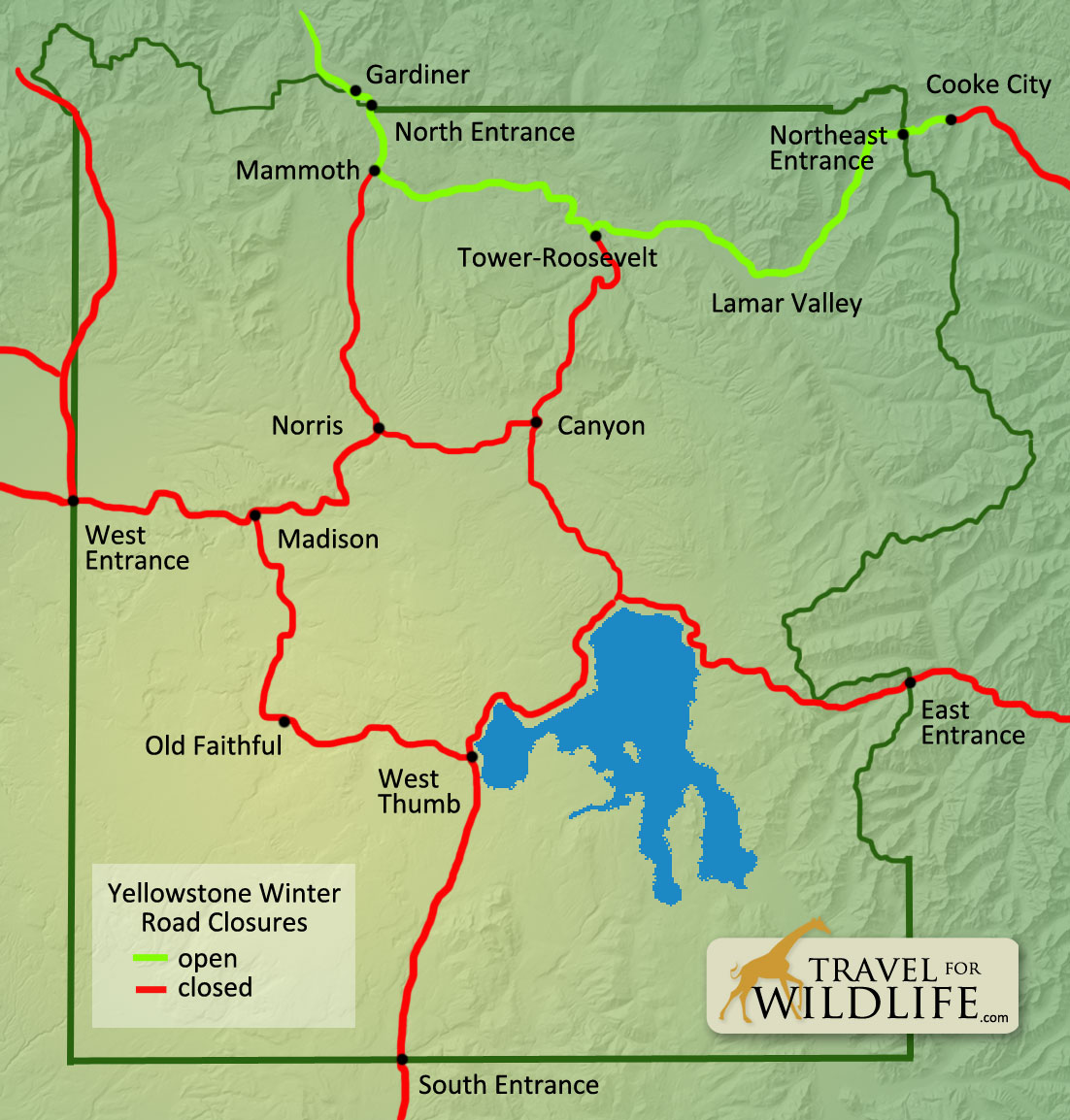
If you visit Yellowstone in October then you may have the opportunity to see snow in other areas of the park before the roads close. I enjoyed watching elk around the geo-thermal features of Old Faithful and seeing bison swimming across the icy Yellowstone River. Even when the roads are closed you can still see some of the famous Yellowstone Mammoth hot springs and check out some Yellowstone waterfalls (some may be frozen!)
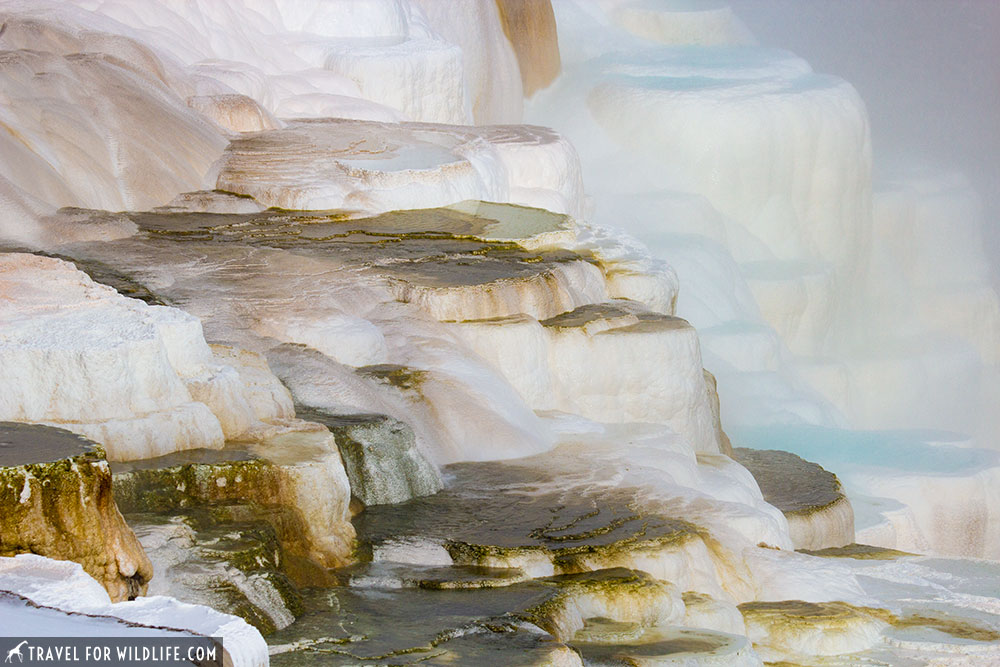
If you travel to the park before the roads close, you’ll still be able to visit Canyon Village, Hayden Valley, Dunraven Pas, and Old Faithful with your car. Later in the winter season you can take snow coaches into the park from the West Yellowstone entrance.
Fall Foliage in Yellowstone
If you plan to see the fall colors in Yellowstone bear in mind that fall happens very early in the park. Fall foliage is in its prime from late September to Early October. But keep in mind that weather is unpredictable in Yellowstone, and so is its fall season. Early snow might happen and roads may close temporarily.
Best place to see the golden aspen trees and the spectacular scenery in Yellowstone are the Lamar Valley and Mammoth Hot Springs. Time your visit to early morning or late evening for those golden colors.
What We Love (& Don’t Love) About Yellowstone in October & November
To me, fall in Yellowstone is a hidden gem that the world seems to have ignored. Looking at visitor stats you can see that while October still gets a fairly substantial number of visitors (over 200,000 people in 2018) November is the slowest month of the year! In fact there were only 13,000 visitors in November last year! This means you’ll basically have the park to yourself. And we thought winter was quiet!
The rule in the park is, you can only stop in the designated pull-outs, but in November there is nobody around to care. On week days you can park in the road and generally not see another car for 20 minutes. (But you’re still not supposed to and rangers do patrol the road, so pay attention, be courteous, and don’t block anyone!)
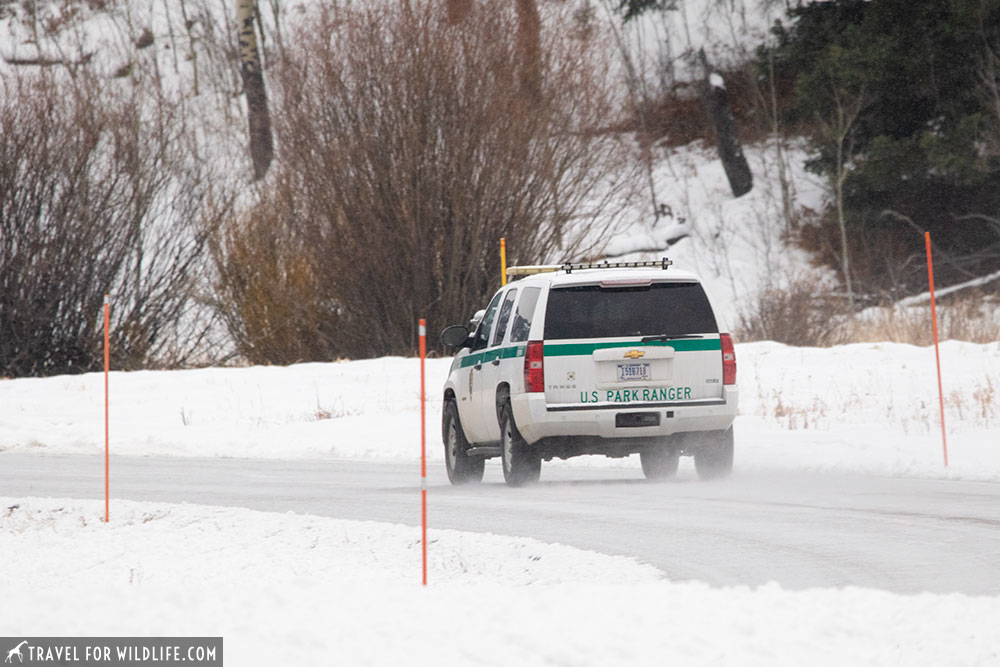
In October and November, the snow is patchy. Generally there is no snow at the lowest elevations around Gardiner and maybe a foot or two in the high elevations around Silver Gate. In the middle ground around Lamar Valley you tend to get thin snow. On the negative side this makes it more challenging to see dark-colored wolves than it would be in solid snow. On the plus side, fewer noisy snowmobiles in Cooke City and there are less people driving their snowmobile trailers at high speeds up and down the park roads. And … you can hike!
Another downside is that you won’t see the golden aspens that so famous in Yellowstone. Fall foliage is gone and the aspen groves are past their best season.
Hiking Yellowstone in November
During winter it’s nearly impossible to walk in the deep snow of the park (unless you bring snowshoes or cross-country skis). However, in November you can still go for a hike! The photo below is from November, when we were able to hike in the Lamar Valley.
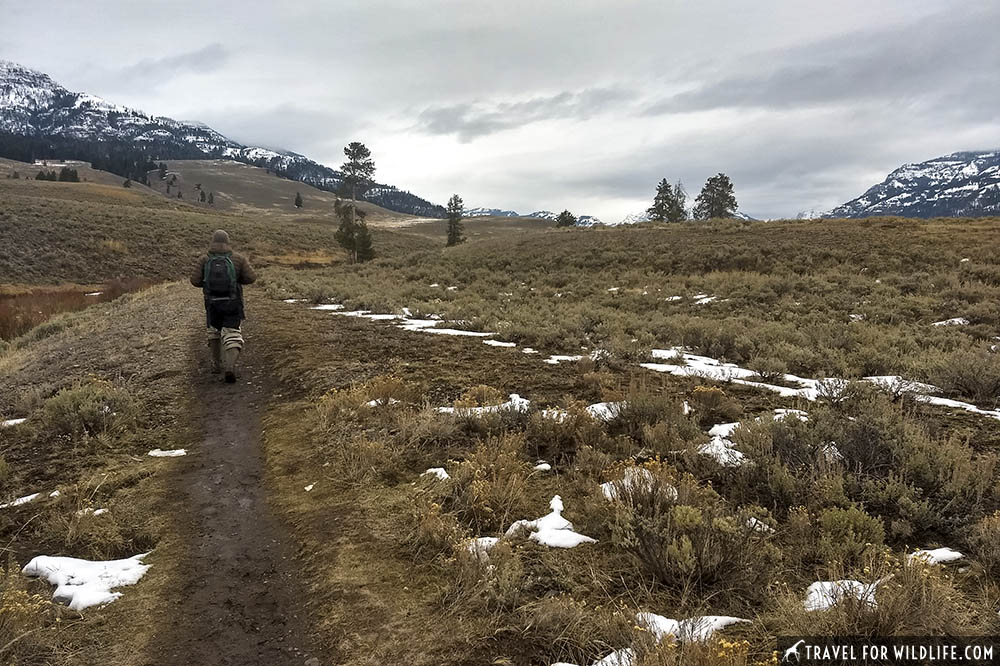
Cristina and I also walked up to Trout Lake in mid November. This is a great time of year to listen to the amazing sounds of the ice freezing on the lake (a little bit like humpback whales singing?) Be prepared for either mud or ice, depending on the temperature of the particular day.
I wore tall rubber boots and Cristina wore her Keen waterproof hiking shoes (available here from REI). Mine were dry but chilly. Cristina’s were a little too short for the snow and mud (you can get a mid WP/boot version of her shoes from REI here). Heading back downhill we had to move carefully on the icy patches. I think the ideal fall hiking boot for Yellowstone would be a well-insulated rubber boot like this one.
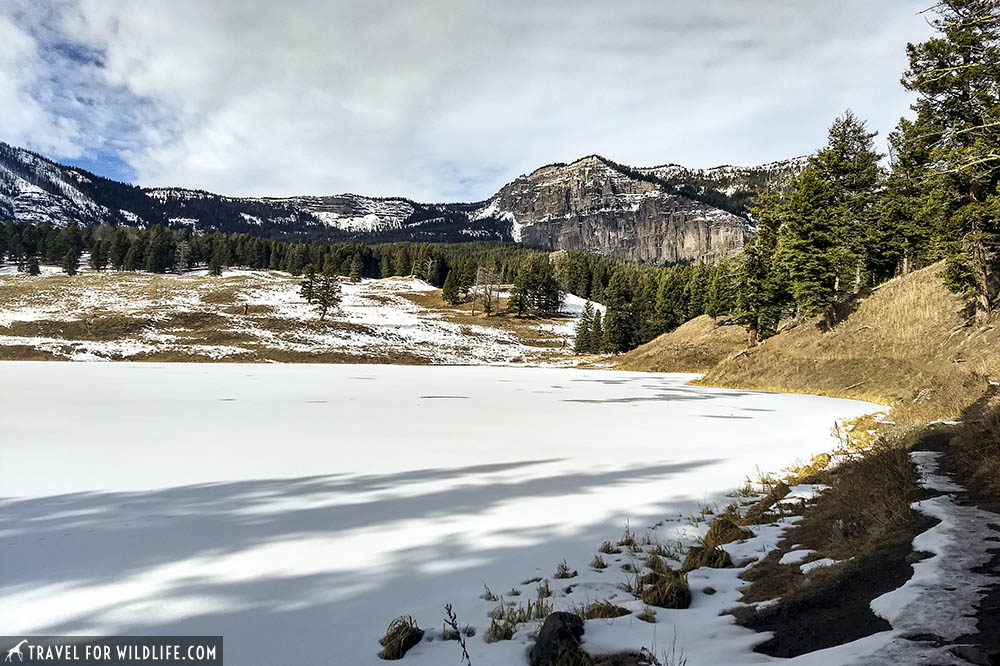
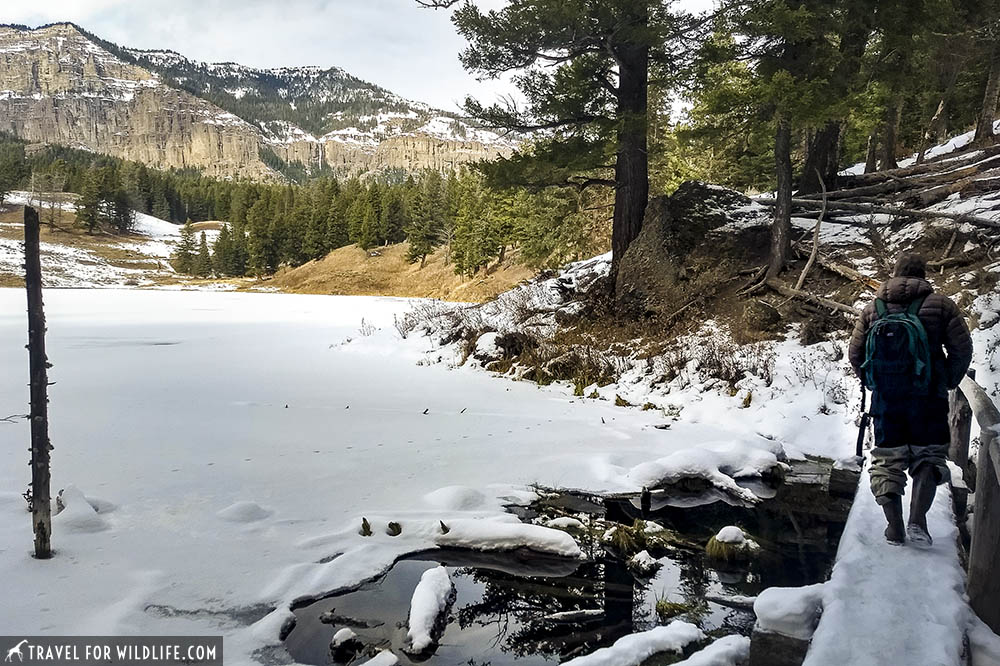
We also walked a little way up the canyon behind the Pebble Creek campground but couldn’t get very far. In winter the creek freezes and people ski right over it. In summer the trail is easily accessible. But in fall, the combination of half-frozen creek, mud, and ice makes it a somewhat treacherous trek. But we still had some great sightings up there like these little mountain chickadees feeding on pine seeds.
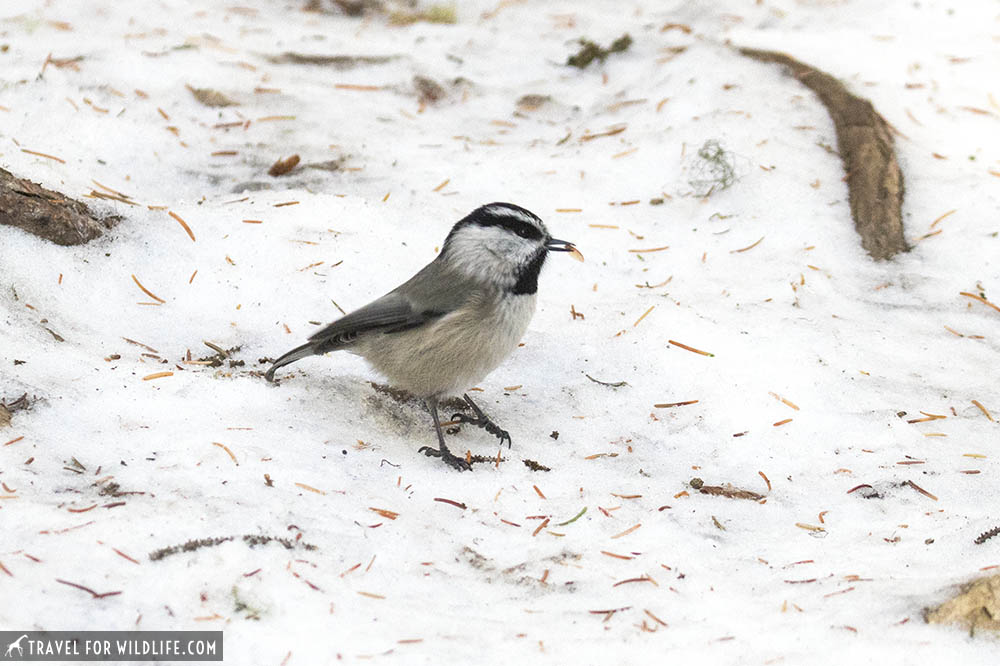
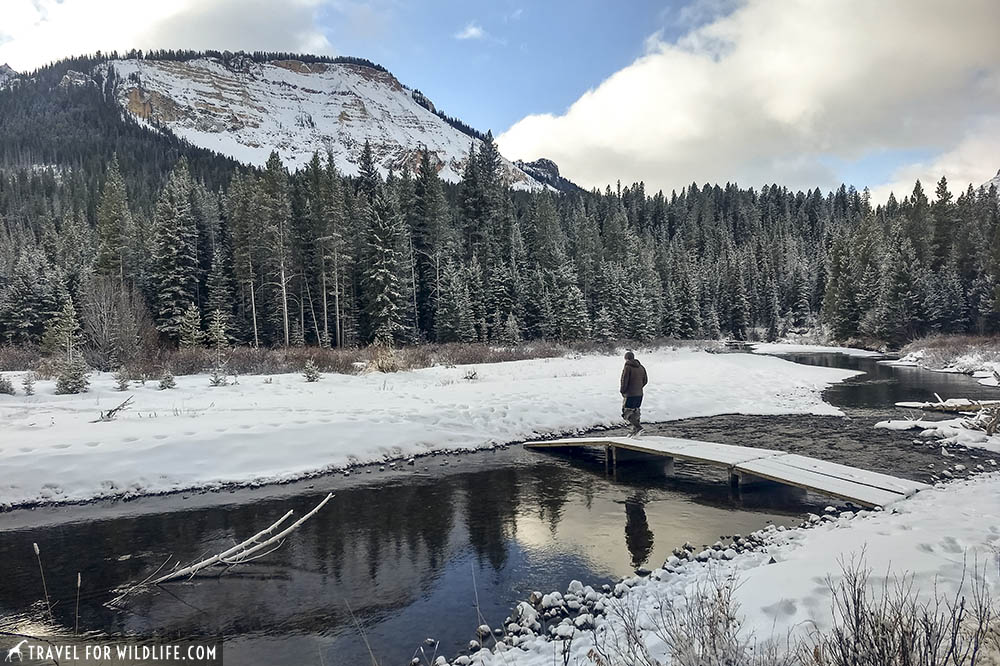
Yellowstone Wildlife in Fall
Don’t fret about the cold weather, fall is still a great time to see Yellowstone wildlife. There are a few species that have already gone underground for the winter like the Uinta ground squirrel and yellow-bellied marmots, but most others can be seen year round.
Yellowstone Predators in October & November
Black bears and grizzly bears are generally hibernating by November but they may pop out in times of warmer weather. If you go hiking you still need to carry bear spray , we asked a ranger and she told us that they could be out as late as the 15th of December. The odds are against seeing them but you never know. I saw a grizzly bear in early November on my first visit! But still haven’t seen a black bear in the fall.
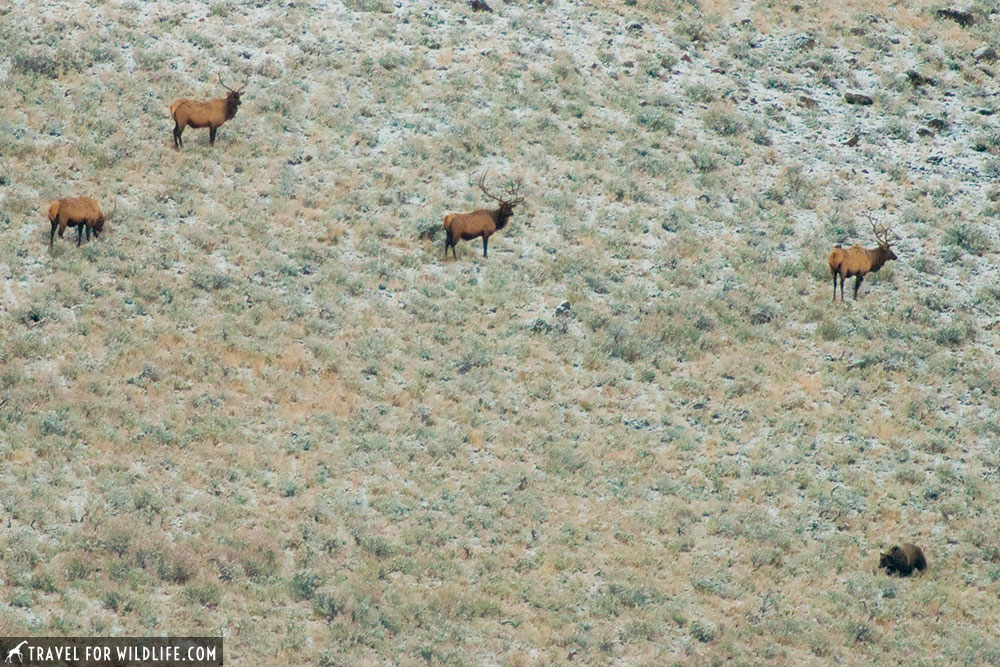
Most other Yellowstone predators are active year round. This is a good time of year to see wolves. The life of a wolf pack tends to center around the den and the new pups during summer, but as fall arrives the packs become more mobile and you have a much better chance of spotting them. While it’s easier to watch wolves in the winter because of the white snow, we still managed to see wolves on three separate days during our November visit.
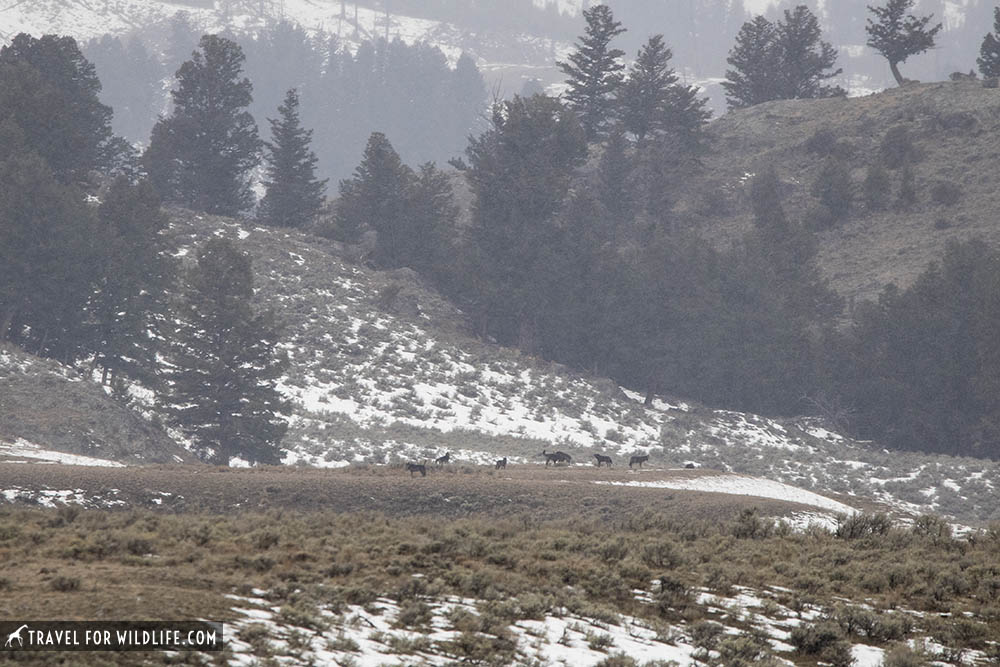
We watched the Phantom Lake Pack at a great distance through scopes, watched the Junction Pack through binoculars, heard the Molly Pack howling, and then watched the Junction Pack at close range on a bison kill on our last day!
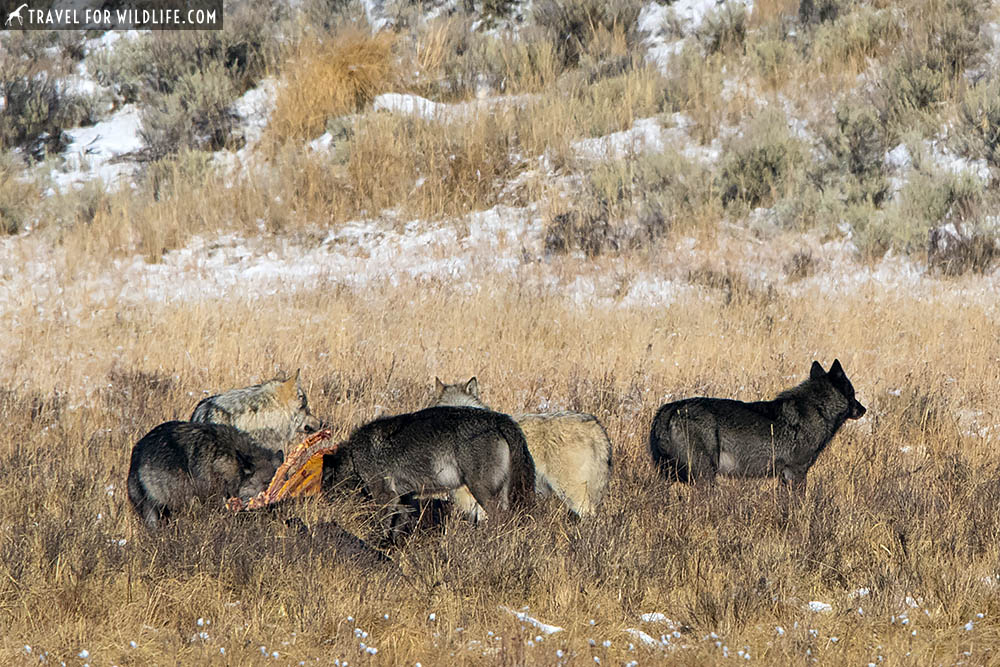
It’s not hard to find them because researchers track them with radio transmitters and are usually set up with scopes whenever wolves are visible from the road. If you see a big group of people with scopes then that’s where the wolves are!
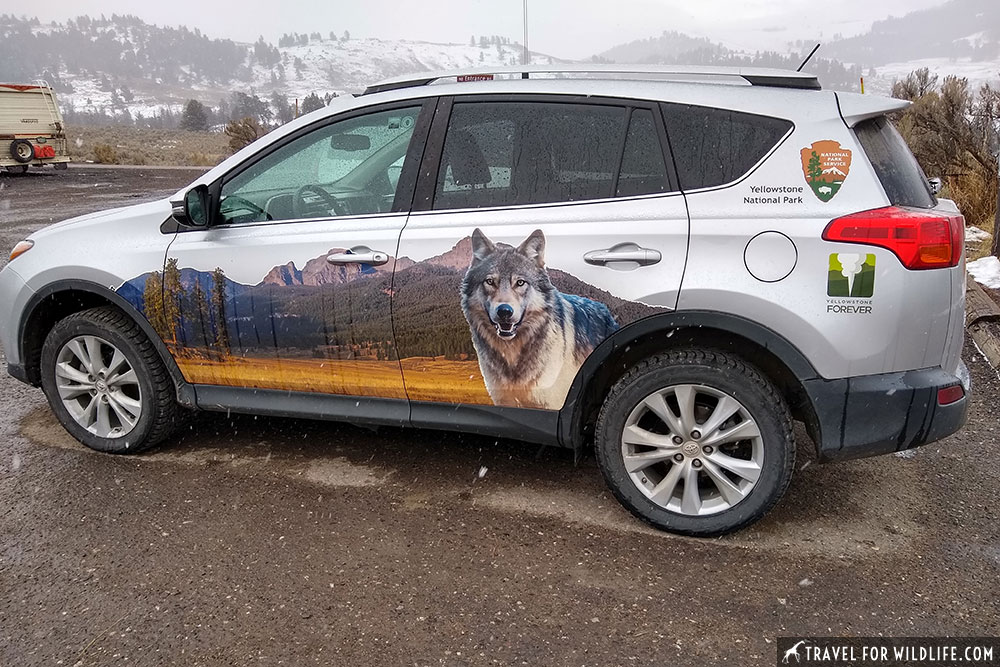
We had a lot of fun watching red foxes hunting in the meadows near Pebble Creek campground. Cristina got some great shots of foxes pouncing, and one walked right up to me as I was crouched behind a fallen tree!
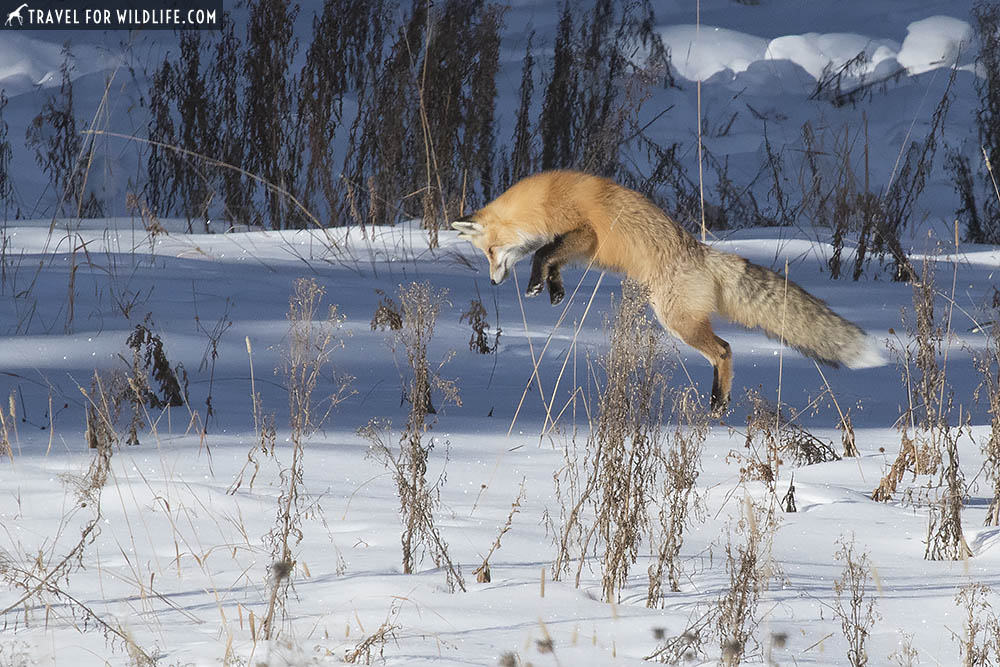
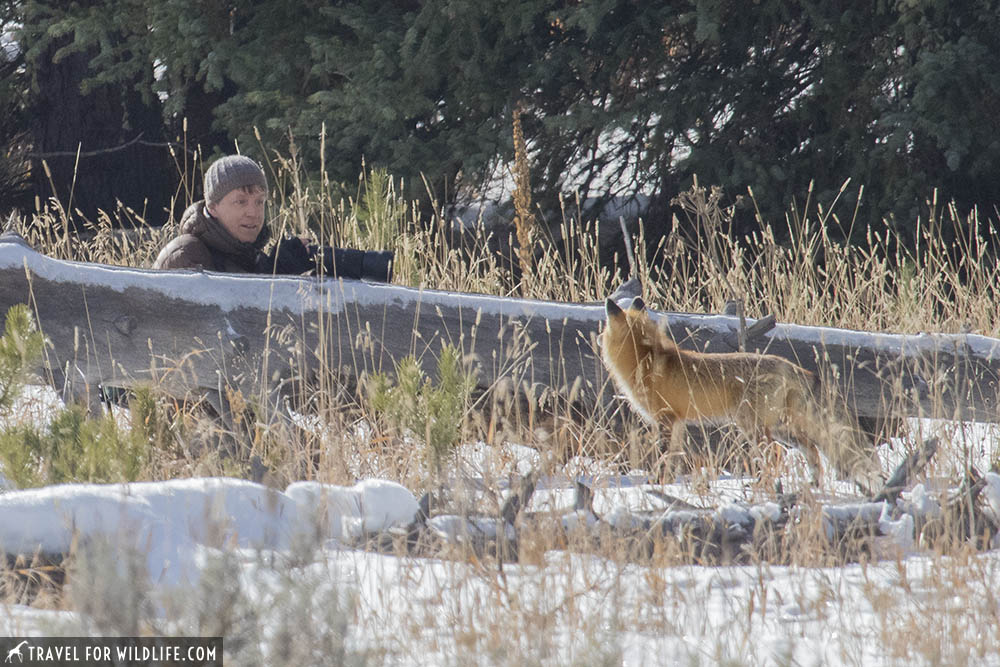
You’re also very likely to spot coyotes. As usual, we spotted coyotes on several occasions trotting busily through the Lamar Valley and we even saw one hunting voles!
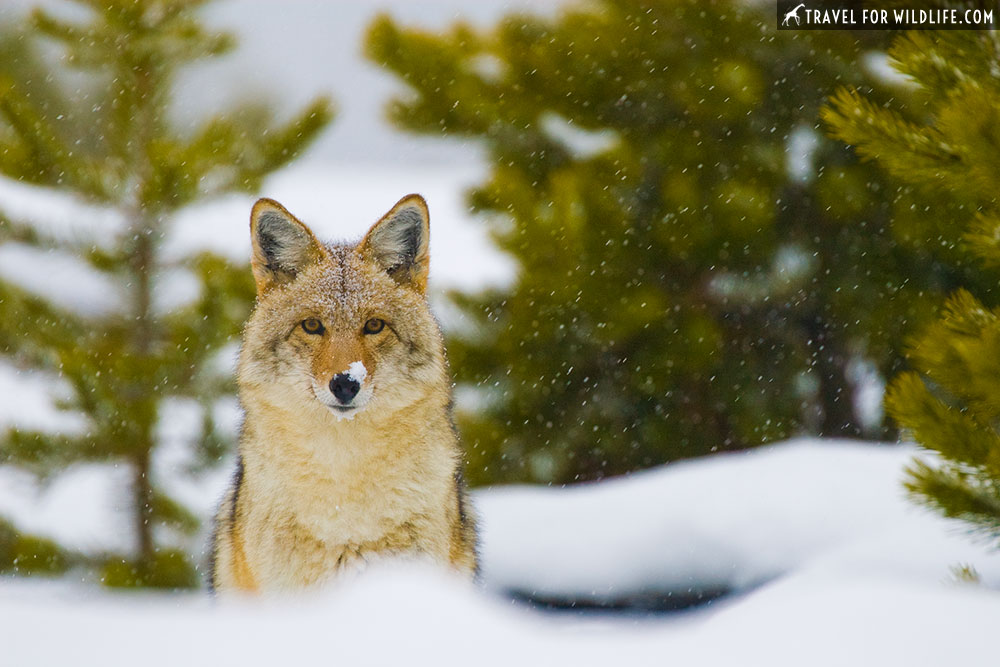
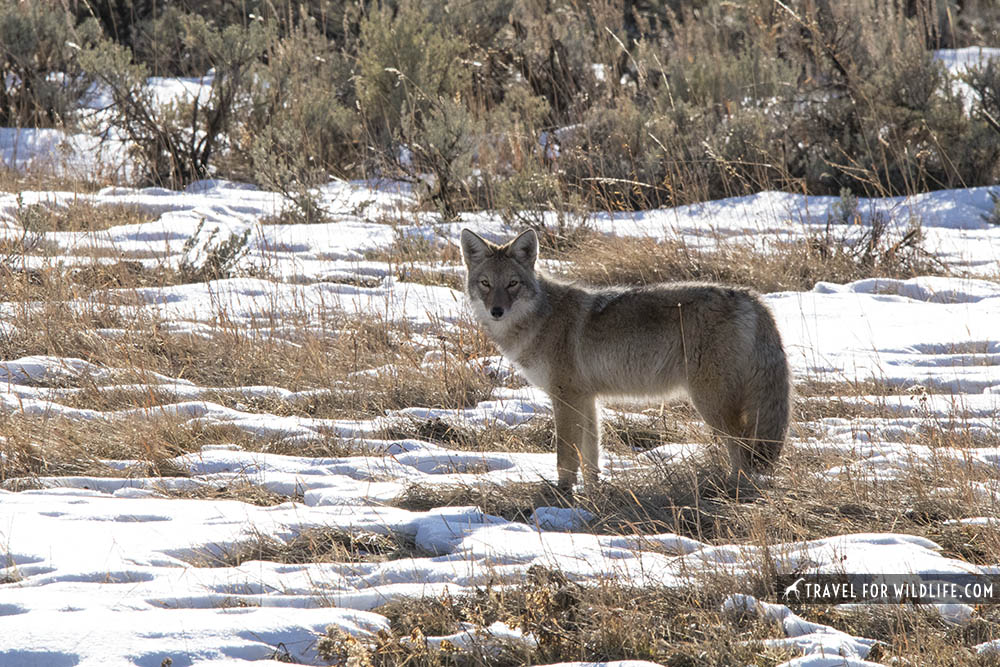
My favorite new sighting was an ermine. Also known as a short-tailed weasel, this tiny frenetic predator turns white in winter and blends in well with the snow. In November the ermines have already turned white and therefore may be easier to spot while the snow is patchy. We sighted this one in the forest just inside the northeast corner of the park.
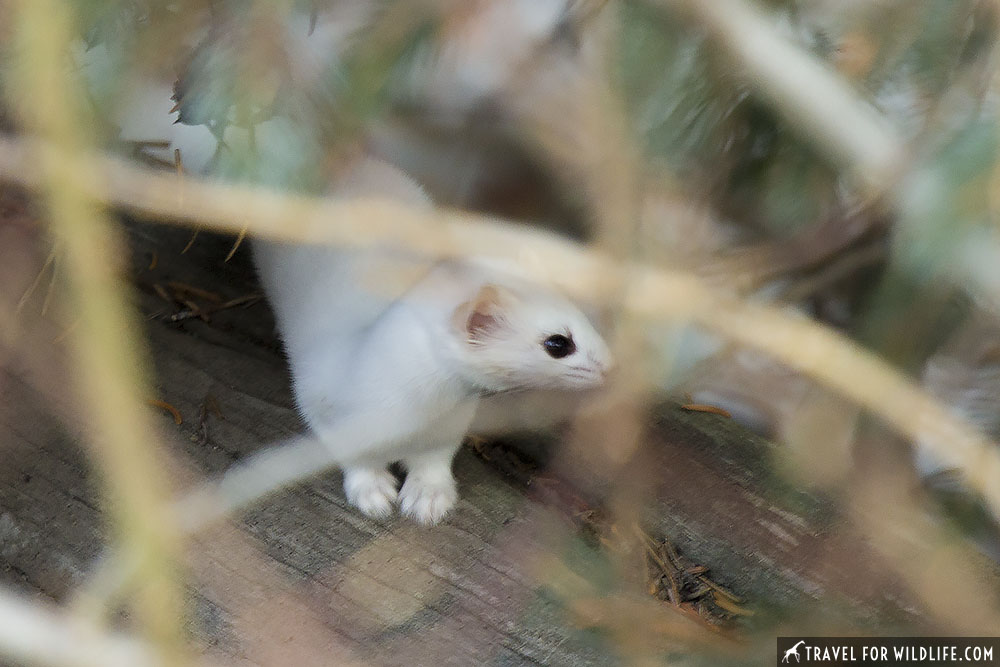
Other carnivores are still active but harder to spot including mountain lions, bobcats, lynx, badgers, river otters, long-tailed weasel, pine marten, and even the occasional wolverine!
Hoofed Mammals in Fall, the Yellowstone Migration
Many hoofed mammals in Yellowstone like pronghorn, mule deer, and elk migrate between different summer and winter feeding grounds. These three tend to migrate out of the park in fall and up Paradise Valley to the north. If you are interested in knowing more about the Yellowstone migration and the wildlife highway in the northern Yellowstone winter range, check the Wyoming Migration Initiative.
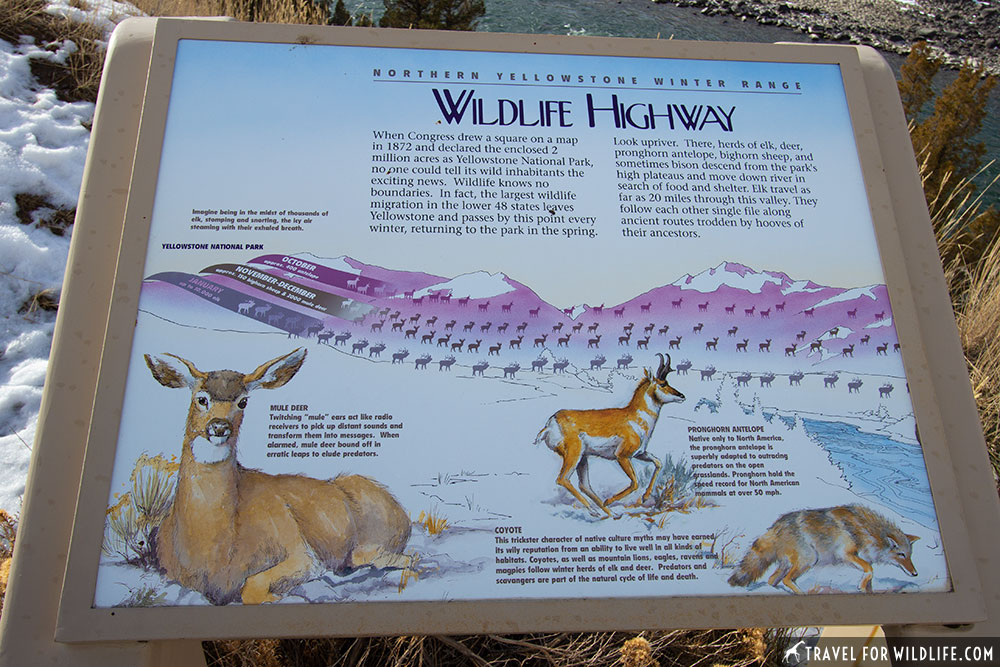
In October and November you’re likely to see mule deer, and pronghorns in Paradise Valley as you head into the North Gate of Yellowstone, but not inside the park. Although I almost always see a pronghorn in the meadows next to the arch at the North Entrance!
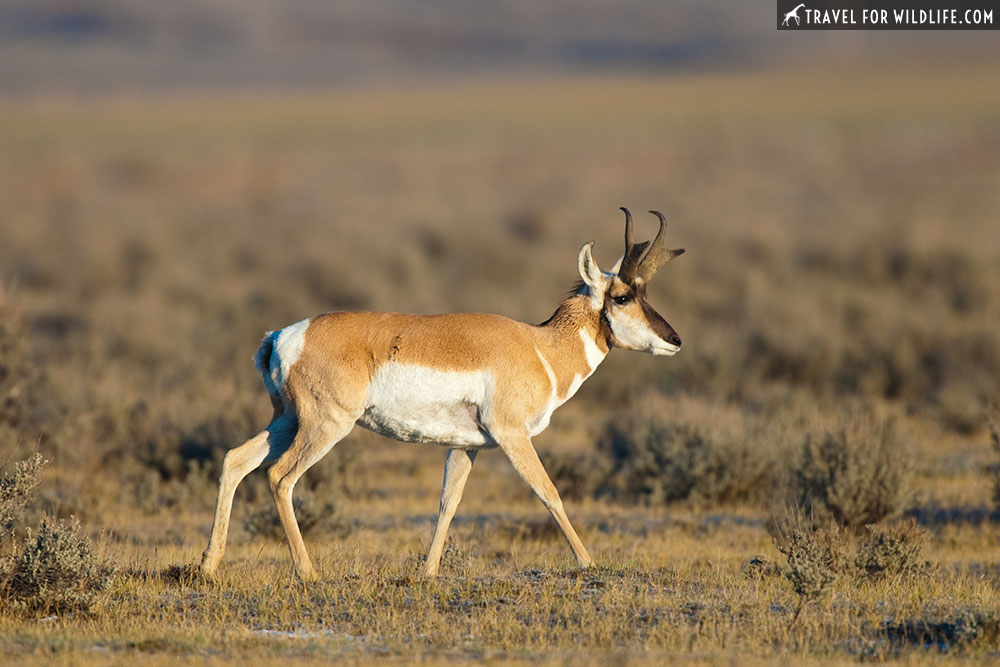
I’ve seen lots of elk inside the park in late October, but this year in mid November, the only elk we spotted were a small group bedded down on a hill in the Lamar Valley and a bunch in the lowest elevations around the park headquarters at Mammoth Hot Springs. They hang around in the lawns between the buildings so they’re quite easy to see there!
We were too late for the elk rut, as elk mating season in the park starts early. In Yellowstone, the season starts as early as August 15 and lasts for a month. The dates of your Yellowstone vacation are crucial if you want to witness the bull elk bugle.
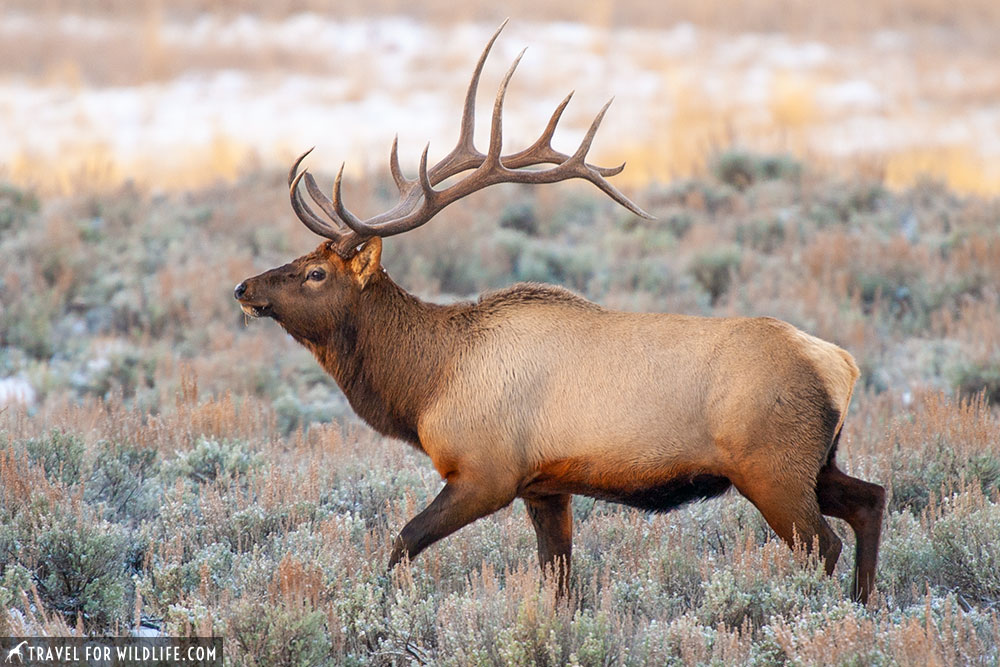
However, bison are visible in great numbers during the fall and even right through the winter, shoveling away deep snow with their massive heads to eat the grasses beneath. We saw many hundreds from a single vantage point near the Slough Creek Campground.
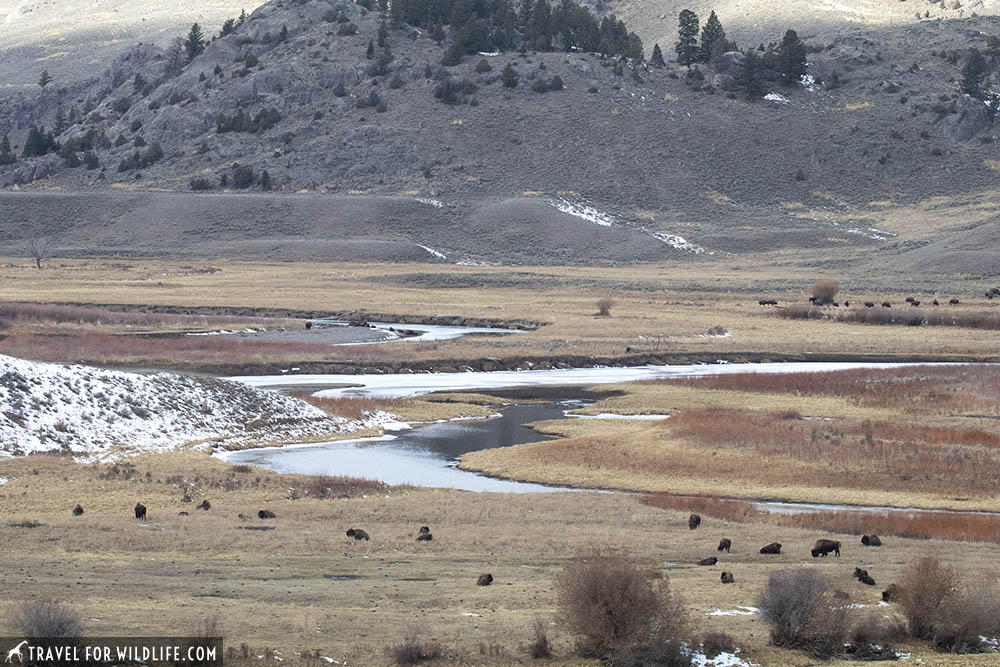
Mountain goats are in the rut in fall but as always it can be challenging to spot them. Your best bet is to scan the mountain tops of Baronette Peak from the pull off in the northeast corner of the park.
Bighorn sheep are also rutting and you may catch a spectacular collision of battling rams. Search around the steep canyons along the Yellowstone River just east of Tower Junction or the steep slopes north of Mammoth (there is a sign that says “Area Closed Sheep Management Area”.) In winter we usually see them in the hills above the confluence of Soda Butte Creek and the Lamar River.
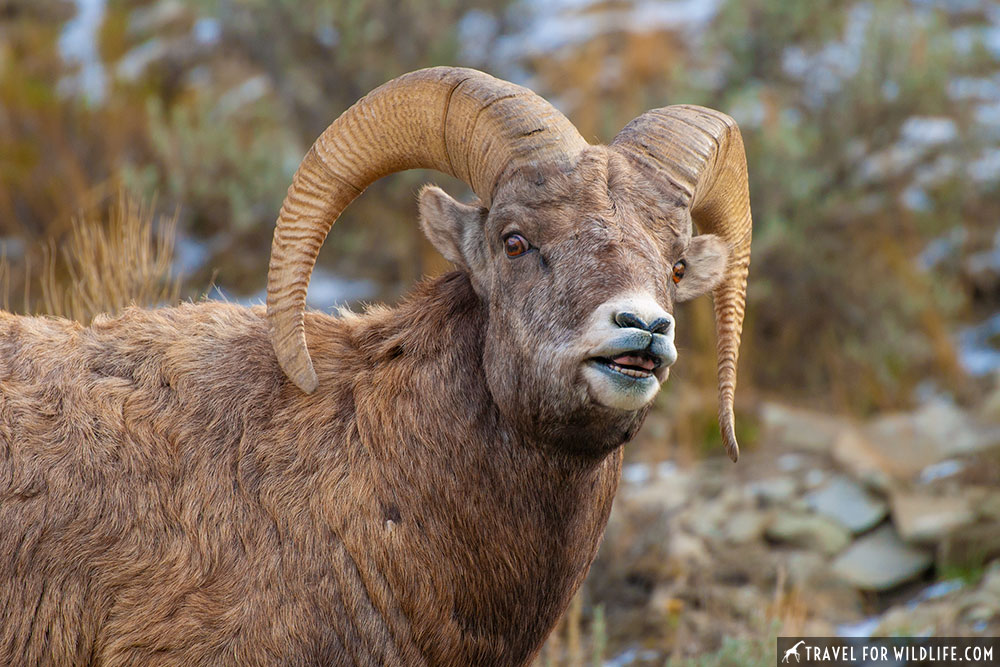
The mostly likely place to spot moose is in the forests by the northeast gate or in the willow flats around Pebble Creek campground (and sometimes right in Silver Gate). While we didn’t spot one this year, I did see some moose around Silver Gate in early November on my first visit.
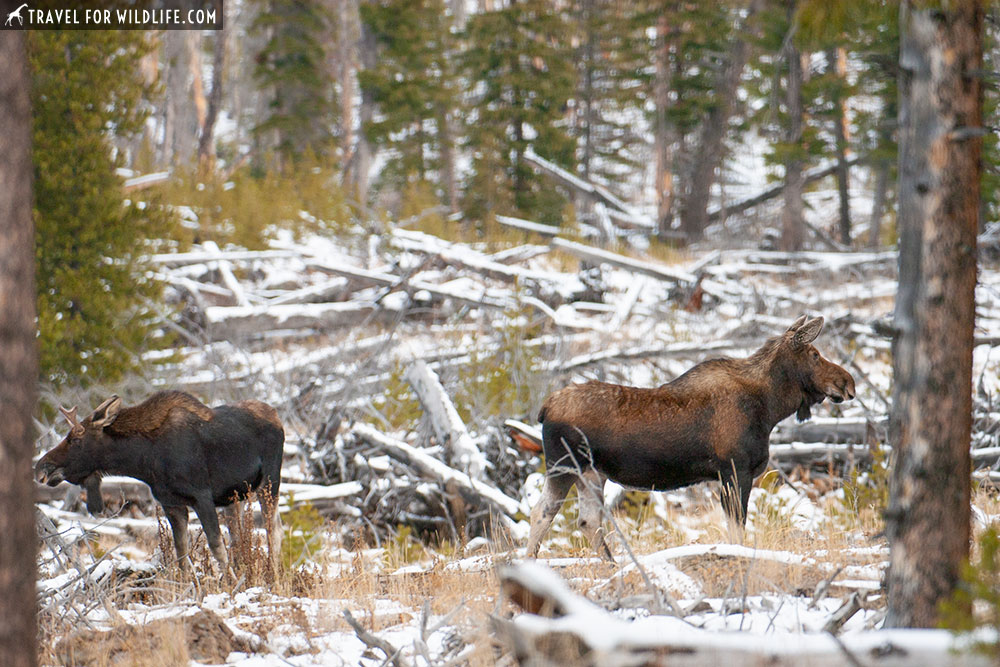
Other Wildlife in Yellowstone
Fall also turned out to be a good time to observe muskrats! I watched this little guy on a couple different days in a pool beside the road just east of the confluence of the Lamar River and Soda Butte Creek.
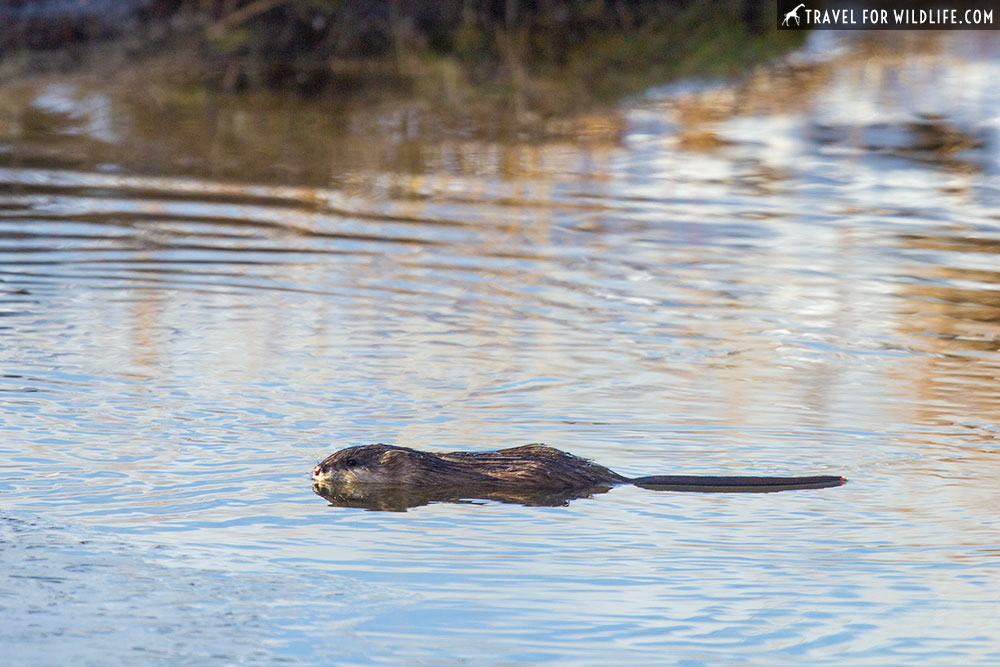
But what surprised me even more was a little creature scurrying around in the water and the rocks very near the muskrat. I took some quick photos of it and upon examination I discovered it had been an American water shrew! That was a crazy rare sighting.
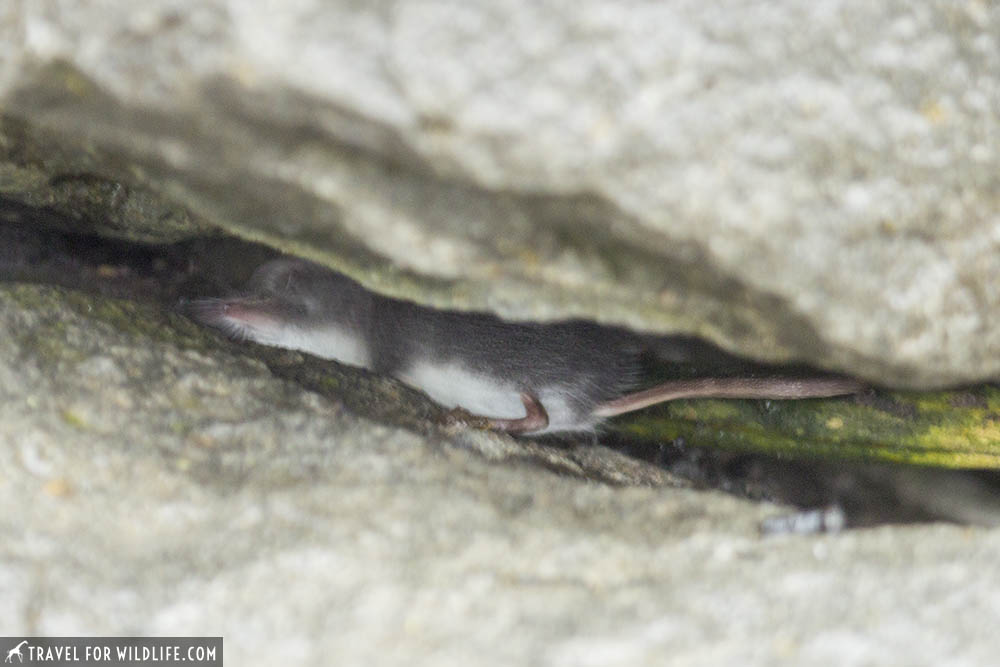
And of course our favorite sound in the pine forest is the exuberant trill of the red squirrel. They make us smile every time we hear them and it’s even more fun to watch them shredding pine cones this time of year.
There are lots of other great animals to watch in Yellowstone in the fall. We spotted bald eagles on the wolf kill surrounded by crowds of magpies. American dippers were flitting in and out of the frigid streams, and pairs of ravens were cuddled cozily on bare branches grooming each other.
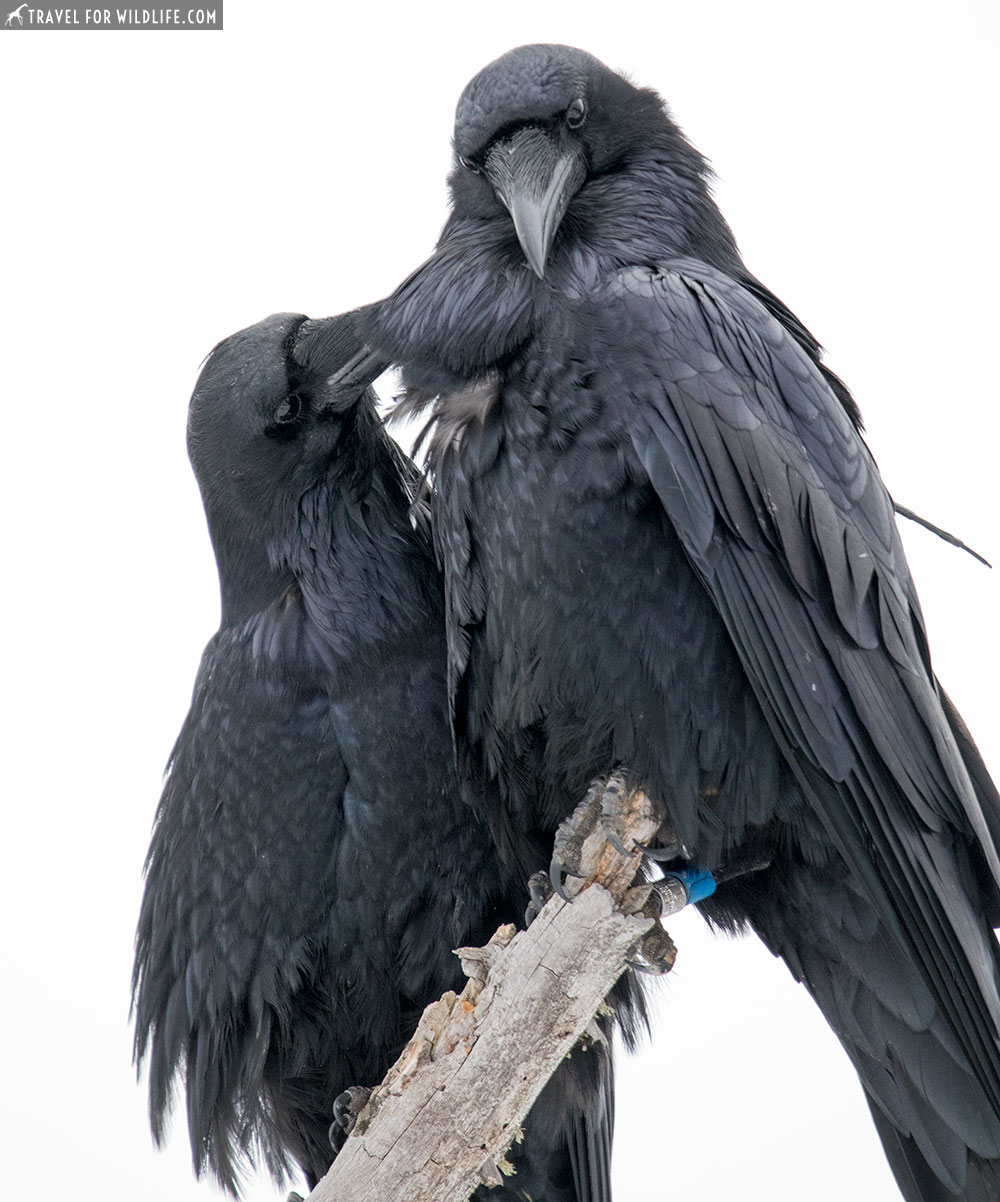
During my first fall visit to Yellowstone I drove down to Yellowstone Lake on the last day the road was open (November 1st) and spotted trumpeter swans on the Yellowstone River along with Canada geese and an assortment of ducks!
If you are planning a visit to Yellowstone in the fall, keep an eye on when the roads close so you can drive to Yellowstone Lake to see the swans. A magical opportunity!
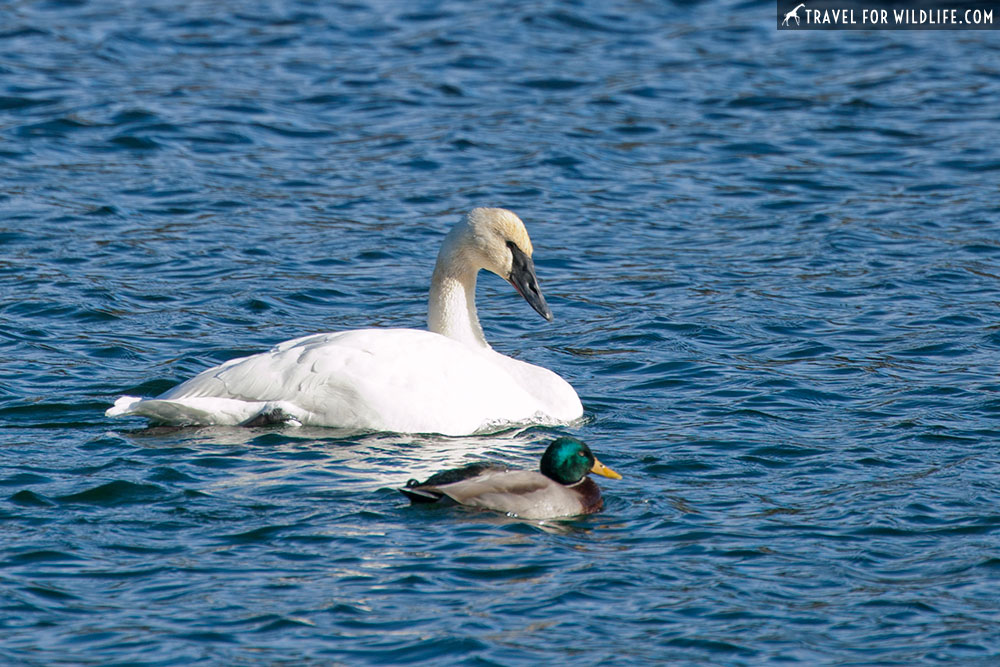
Yellowstone Lodging in the Fall
While the Mammoth campground is open year round, all the other Yellowstone campgrounds, hotels, and lodges close at some point in the fall. Most close in September and some are open into mid or late October. (See this page for a full list of lodging dates in Yellowstone National Park.) The end result is that there is basically no lodging available in the park after November 1st. (except Mammoth campground). This means you have to look outside the park if you want to visit Yellowstone in November.
You basically have two options: Gardiner at the North Entrance or Silver Gate/Cooke City at the Northeast Entrance. As I stated earlier, our favorite area to stay is in Silver Gate and Cooke City. But keep in mind that you probably won’t be able to enter the park at the Northeast. (The Beartooth Highway closes as soon as there is snow and that can be as early as September!) This means you must drive though the park from Gardiner to access it. No problem! The park road is well maintained.
Which one to choose? Cooke City is smaller, quieter, and closer to the Lamar, but gets way more snow (hey we like snow.) Gardiner is bigger with a few more facilities but a little less charming. It’s farther from the Lamar Valley but it’s also warmer and generally snow-free in the fall. Pick whichever appeals to you! Here is a list of Yellowstone cabins you can rent in these areas, many of which are winter accessible.
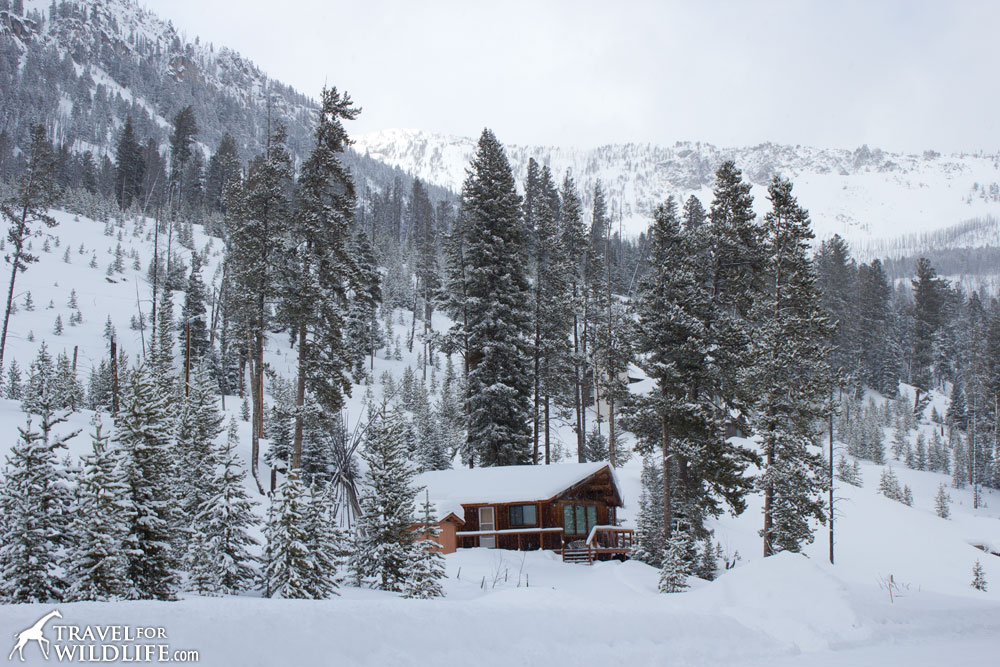
We stayed at the Super 8 Hotel in Cooke City this November and we were the only guests in the entire hotel. Like I said. This is slow season. While they did not substantially lower their rates for this low season, it was still the best deal in town (except for perhaps the Alpine Motel.)
While we appreciated the fact that there were far fewer noisy snowmobiles in Cooke City than in mid winter, we did notice that virtually every restaurant and shop was closed in November. The only restaurants open during our visit in mid November was the restaurant in the Soda Butte Lodge and Buns N Beds. Be prepared and bring your own groceries. Silver Gate was essentially closed down. No shops or restaurants were open, not that there are many to begin with! Gardiner is a different story; there are far more year-round residents there so more services stay open.
Buying Gas in the Fall
While gas stations seem to be shuffling around a bit in Gardiner at the moment, it appears the main Sinclair is moving north of town on the entrance road. This is a good place to fill up upon entering the park. If you read our article about the death of wolf 926F in Silver Gate and our list of Wolf-friendly businesses in Silver Gate, then you probably know we prefer not to buy our gas at the Exxon in Cooke City (the owner was the one who shot the wolf.) The good news is that this mid-November we found the gas station at Tower-Roosevelt still open, even though the operating hours page says it closes in September. So be sure to stop in and see if the pumps are operating there if you visit Yellowstone in November!
After having visited the park during different times of the year, November has become a new favorite, along with January/February. Yellowstone in the fall has almost all the advantages of Yellowstone in the winter, plus November has the least visitors of any month. If you want to feel alone in Yellowstone, see the snow, and be able to hike, fall is your season!

Hal Brindley
Brindley is an American conservation biologist, wildlife photographer, filmmaker, writer, and illustrator living in Asheville, NC. He studied black-footed cats in Namibia for his master’s research, has traveled to all seven continents, and loves native plant gardening. See more of his work at Travel for Wildlife, Truly Wild, Our Wild Yard, & Naturalist Studio.
